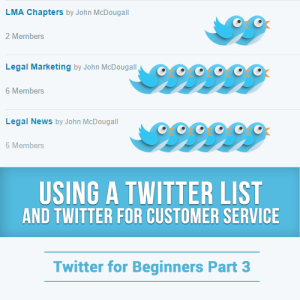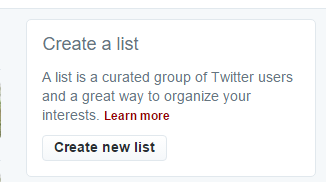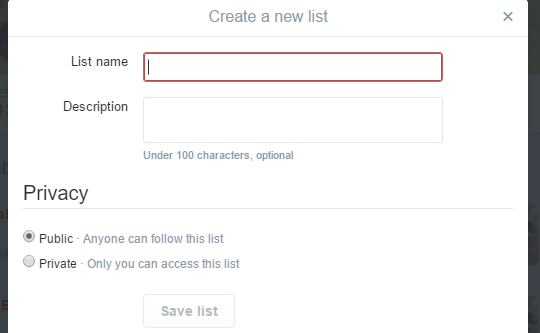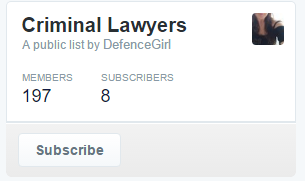 Last week, I gave you several tips to build your twitter following. Some of the strategies were easy, like adding a picture with your Tweet. Others required a bit of creativity, like sharing your thoughts in interesting twitter conversations.
Last week, I gave you several tips to build your twitter following. Some of the strategies were easy, like adding a picture with your Tweet. Others required a bit of creativity, like sharing your thoughts in interesting twitter conversations.
Today, as promised, I’ll share different ways to use Twitter for your business—and not just in growing your brand and marketing your products.
Who do You Follow on Twitter?
Friends? Colleagues? Customers?
Following other twitter users is one of the easiest ways to get a following.
But sometimes, it’s hard to choose who to follow. You want to connect with more interesting people but don’t know where to start.
You can:
- Follow random people Twitter suggests.
- Follow influential people in your industry
Hands down, I recommend option two.
Now the next question is how do you find those influencers and thought leaders that will make your Twitter feed a little more fascinating to read?
Enter Twitter Lists
As mentioned on part 1 of this tutorial series, a list is a group of Twitter users curated for a specific reason. You can create a list of your favorite authors, business competitors, vendors, and just about anything you can think about. You can also subscribe to other people’s list.

Your list will show you a collection of tweets from users included on it, so you can engage with them.
To create a list online:
- Click on your profile picture
- Click on “Lists”

- Click “Create new list”

- Name your list: the name can’t start with a number, and exceed 25 characters.
- Choose private if you don’t want anyone to see it, or public if you’re okay with allowing others to subscribe to it.

Not sure who to add on your list?
Brainstorm using the following questions:
- Who do I want to engage with? Customers? Prospects? Competitors? Thought leaders? Create a list for each category you think of.
- Create a twitter list using each of the categories you decided in step 1. You probably already know who your customers, prospects and competitors are, so just look-up their Twitter handles and add them up on your list. Set your list of customers and sales prospects as ‘private’ to avoid potential problems.
- Finding influencers and thought leaders might be harder, so I’ll cover that in the next part of this tutorial.
Finding Influencers and Thought Leaders
To make things easy, let’s start with finding five industry thought leaders. This is just to get started, after you complete these steps your twitter list will definitely have more than five people on it.
- Using Klear, search for Twitter users based on your industry’s category and location

- Narrow down the list using the filter for low response and activity to weed out inactive users.
- Then filter it using influence to pick “Power users” to see who’s most active and then later on using the “casual” filter to see the top 20% to 50% of users in that industry. In the example below, I’m searching for followers in the legal industry.

- Pick 5 people from the search results on “casual” and another five for the search results on “power users.” This way, you’ll have a list of casual users you can like, RT, and share content from. Once you build up a decent following of casual users, it’ll be easier for you to engage with (and get a follow) from other power users.
Check the Lists of Your List
We’re going to find more thought leaders from this initial list of 10. How?
Simple: Mine their lists for other influencers. If one of your chosen power users follows another attorney (or is subscribed to a list of other attorneys), you can bet that person is worth following, too.
From here, you can pick list members worth following or follow all of them by clicking “List members.” Another option is to subscribe to the list, which is easier than following individual members one by one. But subscribing doesn’t give you any control of the list. If the list’s creator adds or removes someone, you’ll see it too.
In the search I did earlier, Riverview Law came as one of the top 16% of responsive Twitter power users. After checking their lists, I found more thought leaders in the legal industry, specifically a list of criminal lawyers, Intellectual Property lawyers, and barristers list.

Finding Influencers isn’t the Last Step
Which brings me to the next step of this tutorial: getting an influencer’s attention.
You can get an influencer’s attention through consistent engagement. That means RTing their posts, mentioning them on tweets, and replying to their posts. Not all of it, but those your own target audience will find useful. I’m sure you can find a common ground between the two.
When RTing their post, add a comment to make your RT stand out. Something as simple as “great post” or “I agree with this” or “I like tip #7” will be appreciated.
The goal is to start building an online connection to them, while curating valuable information your own followers will appreciate. Pretty soon, you’ll get an RT from them, a reply, and some might even follow you back.
Using Twitter for Customer Service
Another important, but sometimes challenging to execute function of Twitter is customer service.
Using Twitter for customer service is easy and low cost. The downside is @replies and @mentions from customers can be seen by others. So a bad customer service can spread like wildfire.
On the flipside, that means providing good customer service can be a source of good publicity.
4 Easy Tips for providing good customer service via Twitter:
- End tweets with your name, or whoever is tweeting on behalf of your account. Doing this personalizes your tweet, so users don’t feel like you’re hiding behind a corporate logo. It feels like they’re chatting with you one on one that way.
@the_supertrolls Hey there! Great question! We’re you looking for an app for Windows mobile? -Dave
— Buffer (@buffer) December 5, 2016
- Solve problems with the shortest number of @replies as possible. This not only minimizes your work, but also minimizes confusion for other users experiencing the same problem (i.e. website error, or any problem that affects a lot of customers).
Why? If you @reply to everyone who asks the same question (i.e. “Is your website down?”), the users who look at your Twitter profile in hopes of figuring out what is going on will have to scroll through a lot of your individually sent @replies, before seeing your original reply or announcement regarding the problem.
- When you realize there’s a problem, tweet it in public then pin the post at the top of your feed so others experiencing the same problem sees it first.
- For regular support problems and massive problems, ask users who tweet you via @reply to your original tweet, or as @mention by tagging you in their tweet, to send you a DM. This minimizes public confusion and negative reviews on your stream. It’s also easier to solve problems individually via DM.
Other Ways to Use Twitter for Your Business
Offer a Twitter Only Special- is your business seasonal? Maybe you sell winter gear, so you don’t have a lot of foot traffic around summer. Or maybe your coffee shop seems to be empty on certain nights. Use Twitter to offer a special deal for everyone who uses the secret code you’ll tweet out at a pre-specified time.
To maximize exposure, hint about the code with several tweets announcing a special. For instance, today you can announce that you’re having a special event and ask guest stay tuned the next day.
The day after that, announce that you’ll be tweeting a special code to get a discount or free upsize) to users use the code you’ll tweet the next day.
Conclusion
Twitter is a great tool for building your authority and there are a lot of different ways to use it. Some of the top authorities don’t “have” to follow anyone and yet they have hundreds of thousands of followers. When you’re getting started however, you are likely going to need to experiment with different tactics to find what works for you.
Whatever you do, be sure to be yourself and share things that your audience will find useful. If you start with the attitude of being helpful, all of the technical elements will eventually fall in line.
